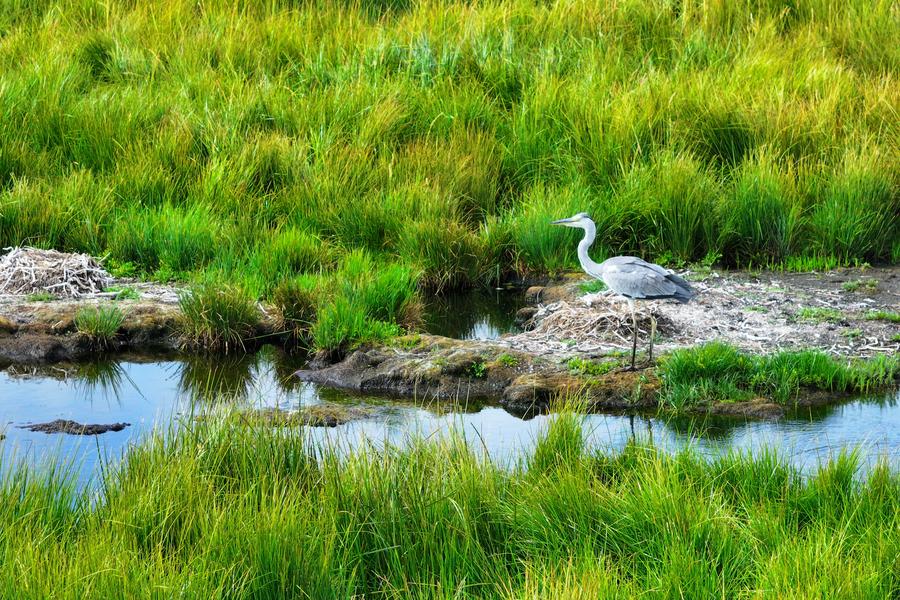Conservation boosts bird protection


LANZHOU — For Gao Feng, a shutterbug and bird lover, setting forth on a journey to wetlands and taking snapshots of migratory birds in such locations serves as a treat in his golden years.
The 62-year-old has captured more than 100,000 images of nearly 300 bird species over the past four years in the wetlands, forests, rivers and lakes in Gansu province.
"I love photographing birds in wetlands. The diversity and size of waterfowl always delivers surprises," Gao said. His lens has recorded rare moments of crested ibises dancing and Chinese mergansers gliding across the water.
Gansu has wetlands covering nearly 1.19 million hectares. In recent years, creative and scientific conservation efforts have transformed these areas into thriving sanctuaries for migratory birds.
Located at the northeast edge of the Qinghai-Tibet Plateau, the Gahai-Zecha National Nature Reserve attracts flocks of migratory birds in June and November every year to reproduce and spend their winter here.
Fan Long, an official with the reserve administration, said that 40 artificial nests and infrared cameras have been set up on the center island to facilitate foraging, breeding and nesting.
"The utilization rate of these artificial nests has reached 99 percent," Fan said. "The nests not only provide safe feeding grounds, but also protect the birds from predators."
Notably, this reserve is a crucial breeding site for the black-necked crane — the only crane species that breeds and lives on plateaus.
Last year, the reserve for the first time managed to successfully tag two black-necked cranes, thereby allowing researchers to track their habitats and migration routes in real-time, yielding invaluable data in support of conservation efforts.
Since late 2012, more than 1 million hectares of wetlands have been created or restored in China, with the country's total wetland area now covering over 56.35 million hectares. More than 2,200 wetland nature reserves have been established nationwide, and major wetlands have seen notable ecological improvements.
Further north, Heihe Wetland National Nature Reserve in Zhangye, Gansu, has become a stronghold for the endangered black stork.
A total of 675 black storks were recorded in the reserve during a survey of its population last year, marking one of the largest known populations in China.
Shan Guofeng, head of the wildlife protection department at the reserve, has dedicated years to monitoring black stork breeding and nesting sites. His team has compiled over 330,000 characters in observation logs and more than 10,000 photographs.
"From relying on binoculars and hiking through mountains to using infrared cameras, smart management platforms and electronic fences, our monitoring and protection methods have become increasingly diversified," Shan said.
The reserve now hosts 82 black stork nests, including over 30 breeding nests, with numbers rising annually. To ensure sufficient food during breeding seasons, the reserve has created feeding areas by controlling water levels, planting vegetation and releasing fish to mimic the storks' natural foraging environment.
Such conservation efforts have also sparked a growing interest in bird-watching among the public, with wetlands offering rich bird resources and ideal platforms for enthusiasts.
Increasingly, younger generations are exploring new models of birdwatching by combining it with science education and outdoor sports.
To meet this rising interest, many wetlands are developing birdwatching bases, which showcase their unique natural and biological resources while also raising public awareness of bird conservation.
"The involvement of multiple stakeholders and diverse approaches to biodiversity surveys have not only enriched our conservation strategies but also unveiled the mysteries behind bird migration," said Zhang Lixun, head of the wildlife biodiversity monitoring and protection team at Lanzhou University.
Xinhua
- Special program marks science month debut
- HKSAR photo exhibition showcases China, Russia WWII cooperation
- Wingsuit Flying World Championship kicks off at Zhangjiajie Tianmen Mountain
- China's defense chief warns against revived hegemonism
- Experts urge global cooperation on security tech and AI governance
- Ningxia aims to become national digital economy hub





































